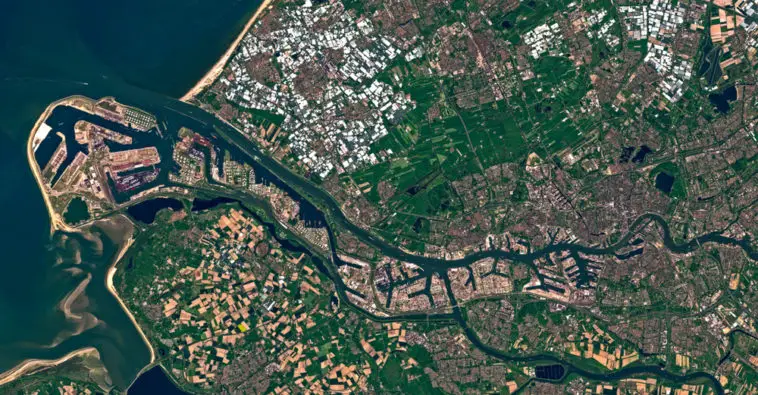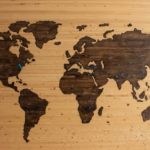Satellites enable us to observe what is happening on any part of our planet.Today, satellite images free have become more accessible and can be used by anyone. About 5,000 are orbiting above us today, often specifically recording observations from the Earth’s surface. Thanks to this data, we can track various processes and changes in much detail over a long period. The creation of digital models allows you to document all the changes and dynamics on the planet’s surface to use it for a variety of purposes further.
The term spatial resolution refers to the level of detail in satellite images. The higher the spatial resolution, the more fine details we can see, and the more clearly they will be visible on the surface of the Earth. The spatial resolution of very high-resolution satellite imagery is less than 2 meters, and the best VHR sensors offer a solution of 30 centimeters. Of course, such images are usually not cheap, but depending on your needs, you can get high-resolution images from free satellite imagery providers.
Another parameter of satellite images is the temporal resolution. This term is used to describe the acquisition frequency of images of the same area, as some satellites take pictures every day, others once a week. So, not every satellite can provide free real time satellite imagery. In addition, some satellites are given the task of taking photos of a particular area at a specific time on a certain day. Today, we can even find free live satellite images. However, the coverage area of the satellites can also vary. The coverage area can range from a few hundred square kilometers or as little as a few square kilometers.
Spatial resolution of satellite imagery
Spatial resolution is one of the main parameters of satellite images. It shows the level of details on the imagery. It is the size of one pixel in relation to the surface, which can be measured in several ways. Ground Sample Distance is the most common method, due to which the distance between the center points of each pixel can be defined. The smaller the distance is, the better we can see the details. It’s important to understand what free satellite imagery you need for your goal.
To define what kind of satellite images you need: low, medium, or free high-resolution satellite imagery, you have to know the difference between them. The resolution is divided into three categories, which include:
- Low resolution (from 60 m/pixel)
- Medium resolution (10-30m/pixel)
- High and very high resolution (30cm-5m/pixel)
It’s also better to know all the advantages and disadvantages of these resolutions before you choose and start searching.Thus, you can compare them with high-resolution satellite imagery free.
Low and medium resolution satellite data
Low and medium-resolution satellite data are available in large quantities for free, unlike free real-time satellite images. Due to ESA Sentinel and NASA/USGS Landsat you can get historical data for the past few decades.
This data is provided in a variety of spectral bands. It can be applied for the variety of goals in different industries. For example, they are extremely useful for crop monitoring and forest fire detection. In addition, the spectral information that low and medium-resolution images contain makes it possible to obtain previously unseen information about surface features and objects.
However, there are a few disadvantages of low and medium-resolution satellites. Only large objects and elements are visible on them. This data type is excellent for discovering common terrain features such as bridges, street and land-use patterns.
High and very high resolution satellite data
This kind of satellite images resolution provides a very high level of detail. High-resolution make it possible to distinguish and identify even small objects, including houses, trees, and cars. You can find the imagery of almost every place on the Earth in high resolution, and it’s a crucial benefit.
In addition to just high resolution, there are also “very, very high resolution” images of less than 1m. Such a high resolution gives a lot of possibilities, including forest inventory, soil mapping, city planning, sea monitoring, creation of 3D city models. High-resolution images allow you to see details, such as landmarks in cities, individual houses, and even passing cars, if you use real-time satellite images free.
The disadvantage of high-resolution images is their high price and coverage of a smaller area. If you want to see an entire city or an entire metropolitan area, you may need several high-resolution images. It largely depends on the satellite.
LandViewer provides access to free satellite imagery
LandViewer is an online GIS assistant that gives users access to satellite imagery from around the world. You can get up-to-date free images search and preview from various satellites, including Landsat 8 and Sentinel 2. Furthermore, it gives you access to aerial photographs from NAIP and Landsat historical imagery. The best spatial resolution reaches 40 cm per pixel. LandViewer users can also take advantage of an impressive free high-resolution satellite imagery set. Furthermore, there is an opportunity to download the full or manually cropped version of the Landsat image in natural colors for free. JPEG, KMZ, or GeoTIFF formats are available for download.
The tool enables instant imagery search and processing. Thus, you can extract valuable information from satellite data. LandViewer features also include raster and clustering tools that let you focus on specific types of data, use frame-by-frame animation to create videos, and more.
So why should you use satellite data?
Satellite imagery enables industries, including manufacturing and business, to back up critical decisions with data. They also allow you to assess risks and make sound plans based on those risks. Satellites can also help evaluate the impact of natural disasters. It is important because
natural disasters affect people’s lives, the environment, businesses, and infrastructure.
Satellite data allows you to quickly and accurately assess the damage caused. Satellite imagery also saves a lot of resources, money, and time. Thanks to them, you receive all information about risks and threats in advance and can take appropriate measures.




